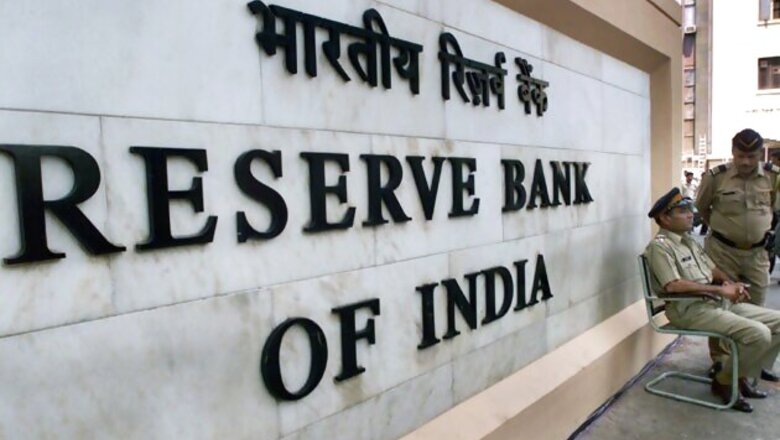
views
Reserve Bank of India (RBI) Governor Raghuram Rajan is likely to hike a key policy interest rate by at least 0.25 per cent on Tuesday, analysts said.
This will be the second increase in the repurchase or repo rate in nearly one-and-a-half months to curb inflation.
In his first policy review announced just a fortnight after he took charge on September 4, Rajan had increased the repo rate by 0.25 per cent to 7.5 per cent, terming the inflationary situation 'worrisome'.
Most analysts feel Rajan would opt for at least 0.25 per cent hike in repo rate again on Tuesday as fighting inflation remained his priority.
'We are expecting 25 basis points hike in repo rate and also 25 basis points reduction in MSF rate,' said senior economist at Dun ~~amp;amp; Bradstreet India Arun Singh.
The RBI had cut the marginal standing facility (MSF) rate by 75 basis points or 0.75 per cent to 9.5 per cent in its previous policy review announced on September 20. MSF is a window for banks to borrow from the RBI.
Arun Singh said in the growth versus inflation dilemma, Rajan seems to be giving priority to inflation control.
Chief economist of HDFC Bank Abheek Barua said the RBI would hike repo rate by 25 basis points to 7.75 per cent, the peak level after which Rajan's predecessor Duvvuri Subbarao had started easing the rates.
Currently, the repo rate, the rate banks pay when they borrow money from the central bank to meet their short-term fund requirements, stands at 7.5 percent per annum. Reverse repo rate, the interest rate that the RBI pays to commercial banks when they keep their surplus short-term funds with the central bank, is at 6.50 percent.
The central bank is also expected to hike the reverse repo rate by an equal measure to maintain a 100 basis points, or one percent, gap between the two rates, which has long been the default setting.
Repo and reverse repo are key policy rates that determine lending and borrowing rates by the commercial banks.
Chief economic adviser at State Bank of India Soumya Kanti Ghosh said 25 basis points hike in repo rate is expected, but the RBI might also surprise the markets by keeping it on hold.
“We believe a hike in repo rate by 25 basis points is expected to anchor inflationary expectations,” Ghosh said.
She said the RBI would also cut the marginal standing facility rate, to help reduce the cost of borrowings of banks and keep the cost of government borrowing programmes within manageable limits.
The RBI has been struggling to maintain a balance in its policy action in view of the persistent high inflation for more than three years, except a brief relief at the beginning of the current fiscal, and recent slump in economic growth.
The wholesale price index-based inflation, the country's main gauge of price rise, jumped to 6.46 per cent in September. The inflation has risen in the recent months after coming briefly within the RBI's commonly perceived comfort level of 5 per cent at the beginning of the current financial year.
The country's gross domestic product (GDP) growth slumped to a decade low of five percent in the financial year ended March 31, 2013. The situation is likely to further worsen in the current fiscal as most estimates put the figure below 5 per cent.
The International Monetary Fund (IMF) has cut India's growth forecast for the current financial year to 3.75 per cent, while the World Bank pegs it at 4.7 per cent.
The Indian government in its estimates has put the GDP growth target for the current fiscal between 5 and 5.5 per cent.
The RBI is expected to keep the Cash Reserve Ratio (CRR), the proportion of money that commercial banks must keep with the central bank, unchanged at 4 per cent, analysts said.



















Comments
0 comment